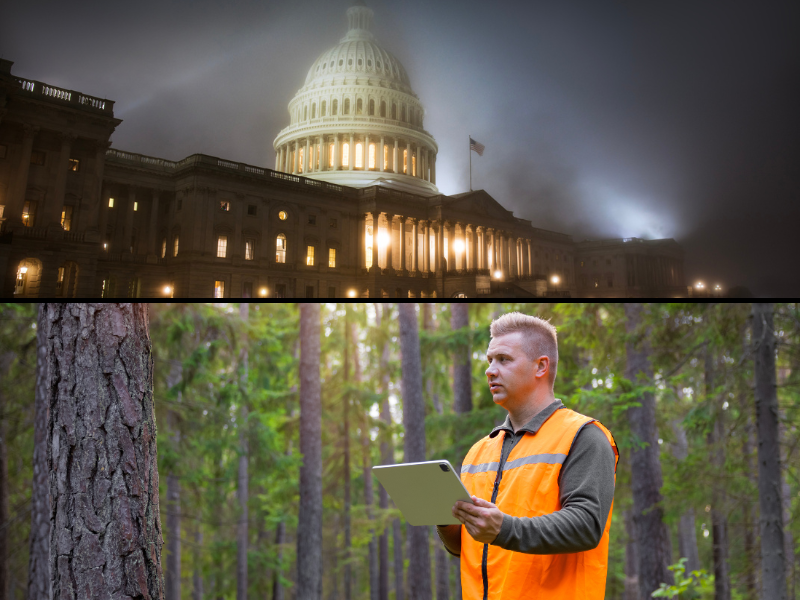In 1973, Congress passed and President Richard M. Nixon signed into law the Endangered Species Act (ESA). The law is administered by the Interior Department’s U.S. Fish and Wildlife Service (FWS) and the Commerce Department’s National Marine Fisheries Service (NMFS). A species can be listed as “endangered” if it is “in danger of extinction throughout all or a significant portion of its range.” It can be listed as “threatened” if it is believed to be under the threat of becoming endangered soon.
Until July, the phrase “significant portion of its range” had been open to interpretation. Under new guidelines from the Obama administration, however, “significant” now refers to when a loss of part of a species range puts the entire population at risk of extinction, and “range” is defined as the species’ current population distribution, rather than historical distribution.
Activist groups argue this will handicap the law’s effectiveness by preventing it from protecting species that have suffered losses in vast swaths of land if they are viable in other locations. They also contend the new “range” definition will prevent the law from working to repopulate areas where endangered species once lived.
Critics of ESA note the law has long been a failure. Despite FWS stating the “law’s ultimate goal is to ‘recover’ species so they no longer need protection under ESA,” only 56 species have been delisted in the law’s 40-year history. Of those, 10 are extinct and 18 were mistakenly listed in the first place. Regarding the remaining 28, the government hasn’t presented any evidence showing ESA specifically led to their recovery. In addition, the price of protecting each species is high. For example, the threatened desert tortoise received nearly $190 million in taxpayer support from 1996 to 2009, yet its population increased only marginally.
Although the law has protected several plants and animals from harm, it also has created unintentional damage by distorting the incentives of property owners to be good ecological stewards. Under ESA, a property owner who encounters an endangered species on his or her land will incur harsh environmental restrictions that devalue the land without compensation. By turning endangered species into financial liabilities, ESA actually creates an incentive for property owners to eliminate endangered wildlife habitat or kill and bury wildlife before the government notices.
The Endangered Species Act should be repealed and replaced with a federal biological trust fund that uses general revenue to purchase easements from property owners to protect endangered species and their habitat. This would give property owners incentives to be good ecological stewards while making costs more transparent and controllable.
The following documents provide additional information about the Endangered Species Act.
Eco-Sanity: A Common-Sense Guide to Environmentalism
https://heartland.org/publications-resources/publications/eco-sanity-a-common-sense-guide-to-environmentalism
In Chapter Six of Eco-Sanity: A Common-Sense Guide to Environmentalism, authors Joseph Bast, P. J. Hill, and Richard Rue examine the Endangered Species Act. There is no doubt the law has protected many plants and animals from being killed or injured, the authors write. However, they note, the lack of progress on species being removed from the endangered list indicates the net effect of the law has been less than positive. The Endangered Species Act creates distorted incentives for property owners to avert government intervention by intentionally making their land uninhabitable for the creatures or even killing the animals outright.
Cato Handbook on Policy
http://www.cato.org/cato-handbook-policymakers/cato-handbook-policymakers-7th-edition-2009
The seventh (and most recent) edition of the Cato Handbook on Policy, released in 2009, includes myriad proposals to reduce the size and scope of the federal government. Chapter 44 discusses environmental policy and explains how command-and-control regulations undermine markets and harm taxpayers and the environment.
The Endangered Species Act at 40: Species Profiles
http://reason.org/news/show/endangered-species-act-profiles
Brian Seasholes, director of the Endangered Species Act project at the Reason Foundation, examines the effects of the law. He concludes it has had adverse effects on both property owners and endangered species and failed its stated goal of recovering the populations of species listed as endangered.
Conservation, or Curation?
http://www.nytimes.com/2014/08/21/opinion/conservation-or-curation.html?hp&action=click&pgtype=Homepage&module=c-column-top-span-region®ion=c-column-top-span-region&WT.nav=c-column-top-span-region&_r=0
Writing in the New York Times, John A. Vucetich, a Michigan Technological University ecologist, and Michael Paul Nelson, an Oregon State University environmental ethicist, argue the U.S. Fish and Wildlife Service’s new interpretation of the Endangered Species Act diminishes the law’s conservation ability.
Time to Move Beyond ESA to Save Species and Economic Interests
http://perc.org/articles/time-move-beyond-esa-save-species-and-economic-interests
Laura Higgins, a research fellow at the Property and Environment Research Center and the Hoover Institution at Stanford University, examines the track record of the Endangered Species Act and concludes the law has been a failure. She writes, “Only 1 percent of species listed have been taken off the endangered or threatened list. And the price per species is high.”
Species Law Is Useless
http://www.cato.org/publications/commentary/species-law-is-useless
In a 1992 op-ed for USA Today, Jerry Taylor of the Cato Institute offers a brief but instructive explanation of how the Endangered Species Act actually harms wildlife and notes mainstream environmental groups avoid seeking any reform of this law because it serves as a convenient litigation weapon for them.
Saving Endangered Species
http://www.youtube.com/watch?v=KEgNemu3mfI
In a 2012 video produced by the Institute for Humane Studies, George Mason University economics professor Don Boudreaux argues the Endangered Species Act is the perfect example of the need to judge policies by their results rather than intentions. By placing financial strains on landowners who encounter endangered species on their property through no fault of their own, the law gives landowners incentives to kill those animals before the government notices and imposes restrictions that devalue their land without compensation.
For further information on this and other topics, visit the Environment & Climate News Web site at https://heartland.org/Center-Climate-Environment/index.html, The Heartland Institute’s Web site at http://heartland.org, and PolicyBot, Heartland’s free online research database, at www.policybot.org.
The Heartland Institute can send an expert to your state to testify or brief your caucus; host an event in your state; or send you further information on a topic. Please don’t hesitate to contact us if we can be of assistance! If you have any questions or comments, contact Logan Pike, Heartland’s state government relations manager, at [email protected] or 312/377-4000.



